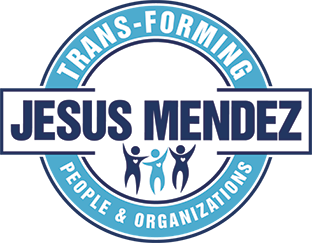Forming Agile Teams (6) Levels of Planning + Experiment
Inspired from Russell Pannone’s presentation called “5 levels of agile planning explained simply” and the experiments that I’ve done in the field with several agile teams about agile planning.
I’ve combined it all to show you what I’ve called the six (6) levels of agile planning as seen in the picture that follows:
Ideal Scenario
Ideally our goal is to have the six (6) levels of agile product planning in place in the organization, so the teams can build what the Stakeholders think would bring more value to the business and its customers.
The product vision would be implemented through the team’s product road maps, which would drive the products that are developed by the team and would be inspected and adapted through the Product Road Map meetings.
The Stakeholders and Product Owners would set tactical goals aligned with strategic organizational goals, to keep the team and product development closely aligned.
In this scenario, Stakeholders, Product Owners and Agile Teams are continuously collaborating to build a product that would solve customer problems and needs. This really sounds amazing but, how does this happens in real life? Is it possible? Let’s navigate through a real example, to see how this ideal scenario has been implemented:
1.Strategic Goal Setting (High level plan for the year)
Company owners, members of the board and stakeholders would define strategic goals that the organization envisions will be achieved by the end of the fiscal year.
In order to avoid changes and keep the organization focused, the strategic plan would be done at the beginning of the fiscal year, with a mid-year review to adjust direction based on the facts gathered at mid-year.
For further references, take a look at the table below that I’ve created to give you a visual example of how I’ve set strategic goals for my own products next year.
2.Product Road Map (Alignment)
At this level of agile planning, stakeholders, with the product owners, would discuss, revise and update the priorities set at the strategic level, in order to enable the creation of the team’s product road map.
The Product Owner would have a clear picture about what goals the company is prepared to achieve in order to answer team questions; by when and why they are a priority. Every iteration the stakeholder and product owner would meet to revise and update the team’s product road map once created.
3. Team’s Product Road Map (Defining tactic goals)
At this level, the Product Owner assisted by the Scrum Master/Agile Coach creates the tactical goals that the agile team will achieve to help the organization reach the strategic goals previously set.
Once created, the team’s product road map would serve to facilitate product road map conversations between the stakeholder and the product owner.
It would also create a bridge between the product developed by the agile team and the strategic goal set by the organization, which I’ve seen enables collaboration, accelerates time to market, and increases team happiness by increasing the stakeholder’s satisfaction.
4. Product Backlog Refinement (Operational goals)
At this level of agile planning; once the tactical goals are set, it is time to discuss and plan with the team how to build each piece of the map, focusing mainly on what’s next in the team’s product road map and how long it’s going to take to put the map together.
At least once per iteration, the agile team will meet to refine the content of the Product Backlog, investing time on the things that are most important to the organization.
It’s at this level where the agile team would identify the operational goals that need to be reached to achieve the tactics defined in the team’s product road map.
5. Iteration Planning
Once the iteration has started, the product owner brings to the team the iteration product wish list based on what was refined during the previous Product Backlog refinement meeting, as an input to facilitate iteration backlog creation.
6. Daily Planning
Every day, during the daily sync meeting, the agile team creates a daily plan where the iteration backlog will be updated with what the team has completed.
After going through the six (6) levels of agile planning shown above, what I want you to realize is the fact that no matter what scenario you and your teams are facing, you can put in place at least four (4) out of the six (6) levels of the agile planning model within your organization, without having to ask someone outside the organization to change anything.
Strategic Goal Setting example
The example below is a representation of what I would love to achieve by the end of 2016, ambitious ha? Well that’s just to show you how big you need to think to be able to reach your goals.
If your curiosity got you here, I invite you to take a closer look to the techniques, tips and templates for transforming your teams into high-performing sustainable agile teams that I’ve created specially for you in my workbook
Willing to get more techniques for transforming your teams into high-performing sustainable Agile teams?
Here some options to help you out:
- Get your copy of my worbook “Forming Agile Teams” now.
- Register in my upcoming working “Coaching teams during iteration/sprint planning“.
Thank you for reading and for inspiring me to continue sharing.
Jesus
References
- Roman Pichler Blog: 10 Tips for creating Agile Product Roadmaps, http://www.romanpichler.com/blog/10-tips-creating-agile-product-roadmap/
- Vikas Jain: Experiments with Agile Planning Levels, https://www.scrumalliance.org/community/articles/2015/april/experiments-with-agile-planning-levels




